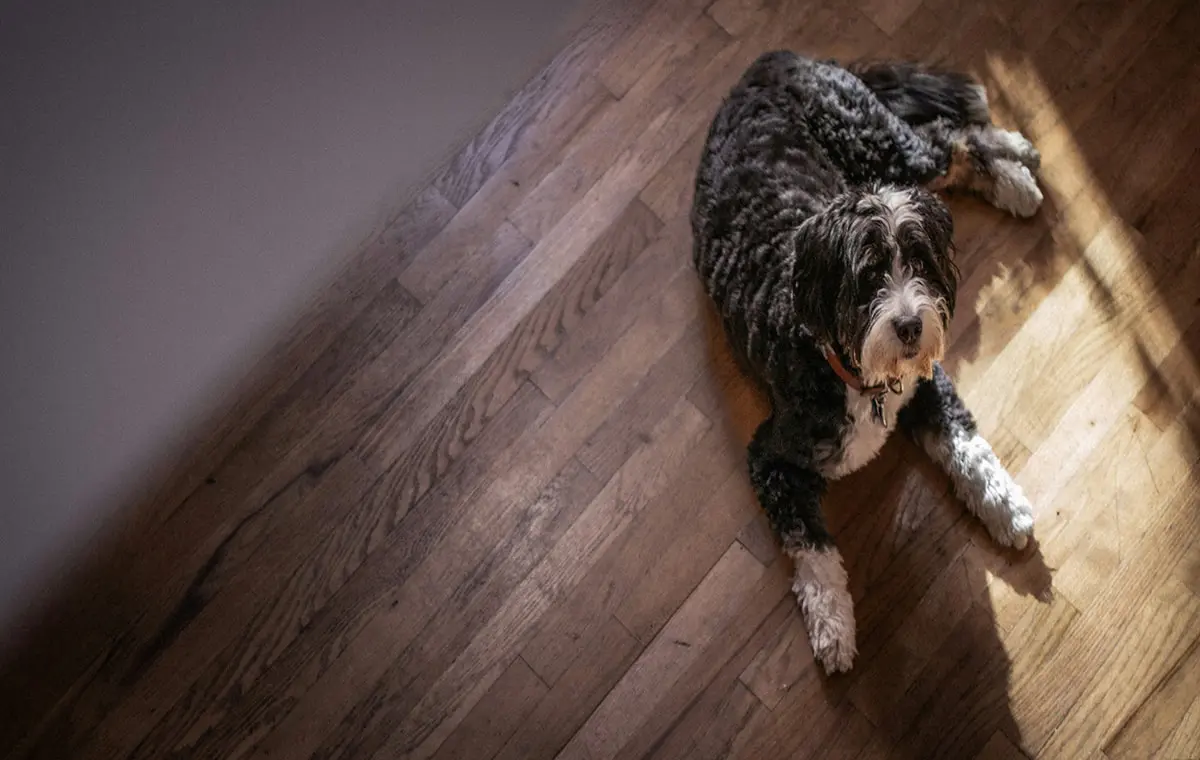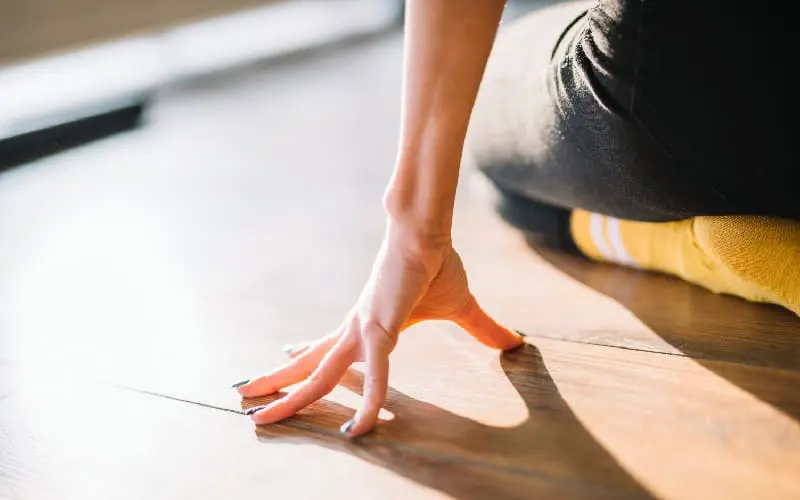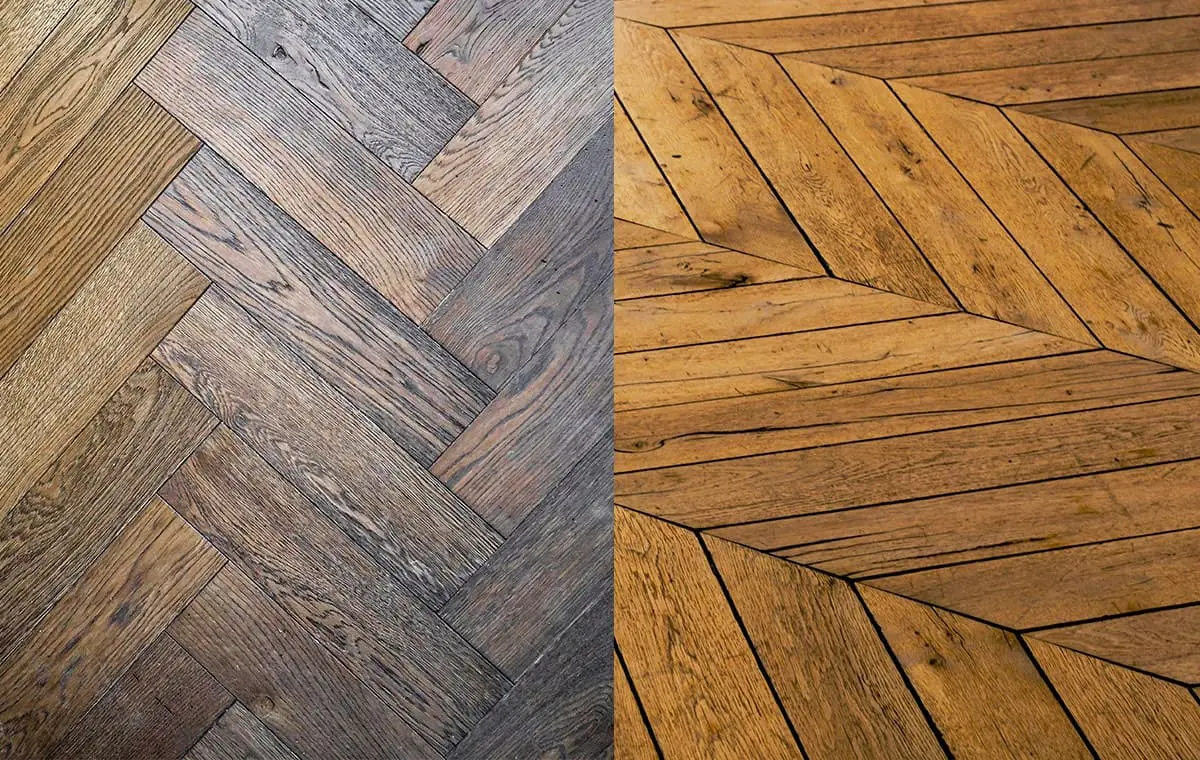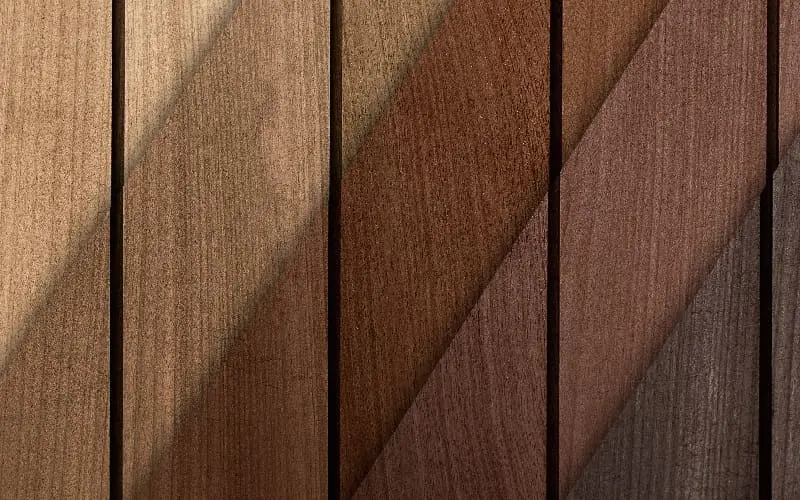Most people assume that allergy symptoms are mainly caused by outdoor factors. If you think the same, you might be surprised to learn that a potential allergy trigger could be right inside your home, under your feet and your pet’s paws! Certain flooring materials can release volatile organic compounds (VOCs) into the air. VOCs are a variety of chemicals with high vapour pressure. They can cause pollution alone and in reaction with other substances. Exposure to VOCs can lead to headaches, nausea, and worsened asthma symptoms. Over time, these compounds may increase the risk of cancer. Understanding flooring health, how different flooring types can trigger allergies, and how to reduce their impact is key to creating a healthier home for you and your family.
That’s why we’ve compared various flooring options—from the best to the worst—to help you make an informed choice.
The Healthiest Flooring Options
Certain types of flooring may contain processed plastics and toxic chemicals, which can be released into the air through a process called off-gassing.
Off-gassing occurs due to ongoing chemical reactions within the materials, releasing compounds like formaldehyde, benzene, and toluene. These chemicals often have strong, sharp fragrances (like bleach, nail polish, or fresh paint!)
In continuing, first, we are going to introduce the types of flooring that are more natural and less allergenic, then move on to flooring with a higher risk of allergies.

Solid Wood Flooring
Real wood has zero VOCs, so solid wood flooring is a healthy choice in itself. However, some wood finishes or coatings might release VOCs during curing. Despite this, in terms of flooring health, solid wood is still a low-VOC (typically less than 0.3mg/m³) option and is considered the best flooring for those who have allergies or asthma.
Engineered Wood Flooring
Engineered wood flooring is the second healthiest choice as it offers the same benefits as solid wood. However, concerns about some adhesives and coatings That may carry VOCs still exist.
Natural Linoleum Flooring
Linoleum is made from natural materials like pine resin and wood flour. It also has natural antimicrobial properties and is easy to maintain. Considering low-VOC installation products can make natural linoleum floors more natural.
Cork Flooring
Like linoleum, cork is a natural, hypoallergenic material free from harmful chemicals. However, the composition of cork flooring can vary. Some cork floors feature polyurethane coatings or adhesives that may release VOCs. Choosing low-VOC finishes helps improve indoor air quality.
Bamboo Flooring
Bamboo is an eco-friendly and sustainable option, making it a favourite among those prioritising health and environmental impact. However, However, you should note when purchasing bamboo flooring, ensure it does not contain formaldehyde-based adhesives.
Some alternative adhesives may also contain isocyanates, which can potentially cause irritation or even lead to asthma.
Tile and Stone
Most smooth-finished tiles and stones are excellent hypoallergenic flooring options if natural stone and tiles do not have uneven edges to trap dust, dirt, and mould. The main concern is that materials such as adhesives and grout may contain toxic compounds and heavy metals like lead, cadmium, arsenic, and chromium.
Flooring Options to Approach with Caution
Certain flooring types pose a greater risk of triggering allergies than others.

Vinyl Flooring
While luxury vinyl flooring has significantly lower VOC levels than older versions, older vinyl floors and some lower-quality new products may still release VOCs and phthalates.
Phthalates, used to enhance flexibility and durability, can continue leaching into the air for years after installation. Exposure to these chemicals has been linked to congenital disabilities and hormonal disruptions.
also read: Vinyl Flooring or Laminate Flooring?
Synthetic Carpets
If you struggle with allergies, synthetic carpets are one of the worst choices for healthy flooring. Those made from polyester or nylon often contain harmful chemicals, such as formaldehyde and other irritants, that can remain trapped in the fibres for months or even years.
Additionally, carpets accumulate dust, allergens, and mould. Keeping them clean is challenging, and they can significantly reduce indoor air quality.
The dyes used for colouring carpets, the adhesives binding the fibres, and the chemicals applied for stain resistance all contribute to indoor air pollution.
Laminate Flooring
Laminate flooring may resemble hardwood, but when it comes to toxicity, it tells a different story. Some laminate flooring products contain adhesives that release formaldehyde and other VOCs. The level of emissions varies depending on the product and manufacturer. In some cases, it may exceed recommended safety limits.
| Flooring Type | VOC Emission Level | Factors Affecting VOC Emission |
| Solid Hardwood | Very Low (almost zero) | Type of finish or coating used |
| Engineered Wood | Moderate | Adhesives and coatings in the layers |
| Natural Linoleum | Low | Installation adhesives and sealants |
| Tile & Stone | Nearly Zero | Type of grout and adhesives used |
| Bamboo Flooring | Varies | Type of adhesives (formaldehyde-based or isocyanate-based) |
| Cork Flooring | Varies | Presence of polyurethane coatings |
| Vinyl Flooring | High | Phthalates and plasticisers in PVC composition |
| Synthetic Carpet | High | Dyes, adhesives, and stain-resistant chemicals |
| Laminate Flooring | Varies (can be high) | Type of adhesives, presence of formaldehyde |
Strategies to Improve Healthy Flooring
It may seem that almost all types of flooring come with a certain level of allergen risk, But some strategies can help minimise this as much as possible.
- If you purchase a carpet, it’s best to place it outdoors or in a well-ventilated area for at least one week. The first weeks after installation are when the highest levels of toxic gases are released.
- When choosing new flooring, look for low-VOC products. These are safer for your health.
- Increase ventilation during and after installing new flooring to help disperse emitted gases faster.
- Regular cleaning, regardless of the flooring type, can minimise dust, dirt, and allergen accumulation. Be sure to use the appropriate cleaning methods for each type of flooring material.
- High humidity levels can increase the allergenic potential of flooring materials. Keeping indoor humidity levels can help prevent mould growth.
- According to ewg, installation methods such as nailing or click-lock floating floors are preferable to reduce chemical allergy triggers. These methods avoid chemical adhesives that can emit harmful VOCs.
Final Thoughts
Flooring is an essential element of your home that directly impacts indoor air quality and, consequently, your health. Choosing healthy flooring can significantly reduce their potential adverse effects on air quality.
Looking for healthy flooring options? Explore our range of low-VOC, eco-friendly flooring products today.
If you have any flooring queries, email Flooring Surgeons at info@flooringsurgeons.co.uk or visit our showrooms in Birmingham and Wolverhampton!
Halesowen
214A Dudley Road. Halesowen, Birmingham, B63 3NJ
0121 274 8575
Monday – Friday: 9 AM – 6 PM | Weekends: 10 AM – 4 PM
Wolverhampton
317 Penn Rd, Wolverhampton, West Midlands, WV4 5QF
01902 836 666
Monday – Friday: 9 AM – 6 PM

















